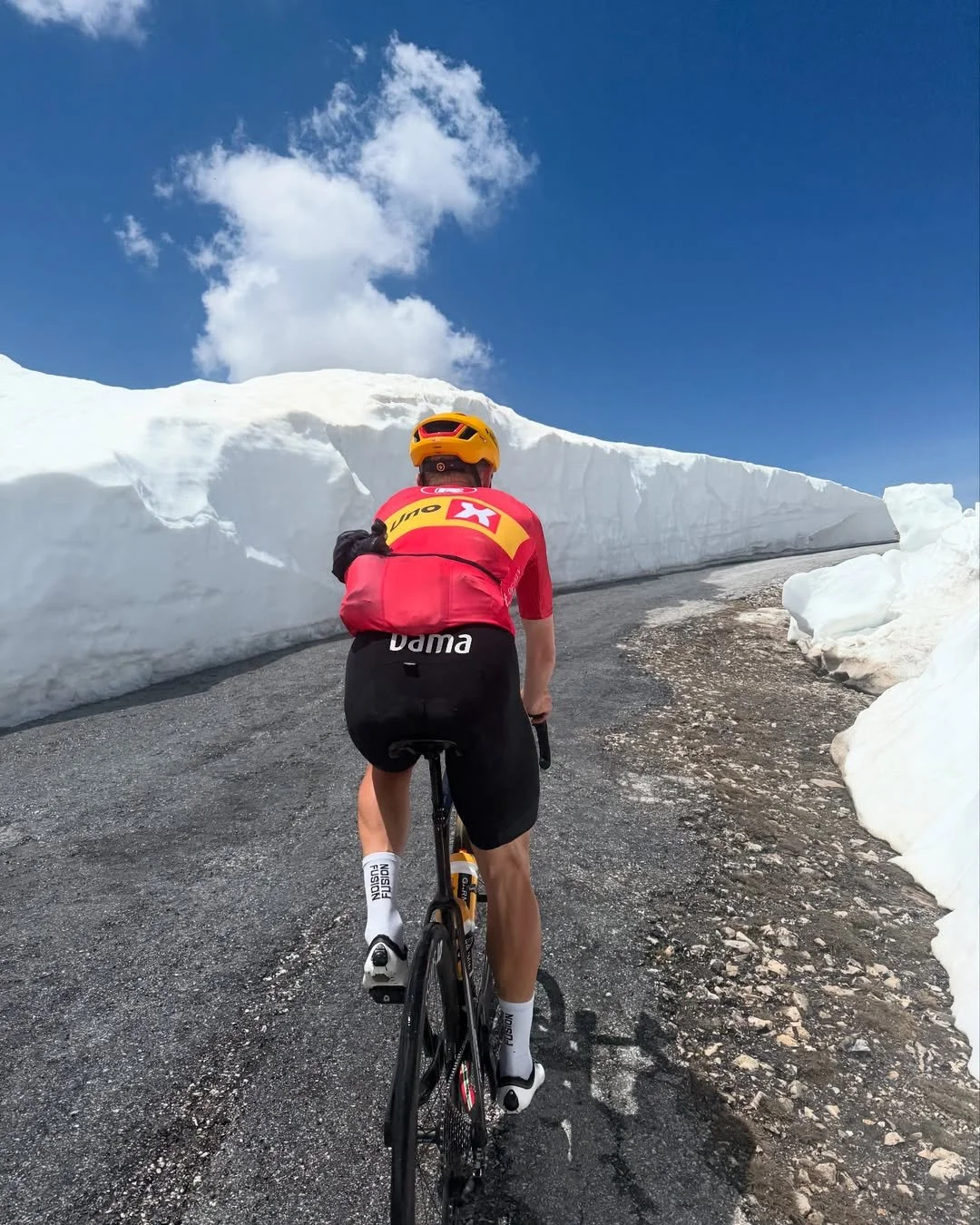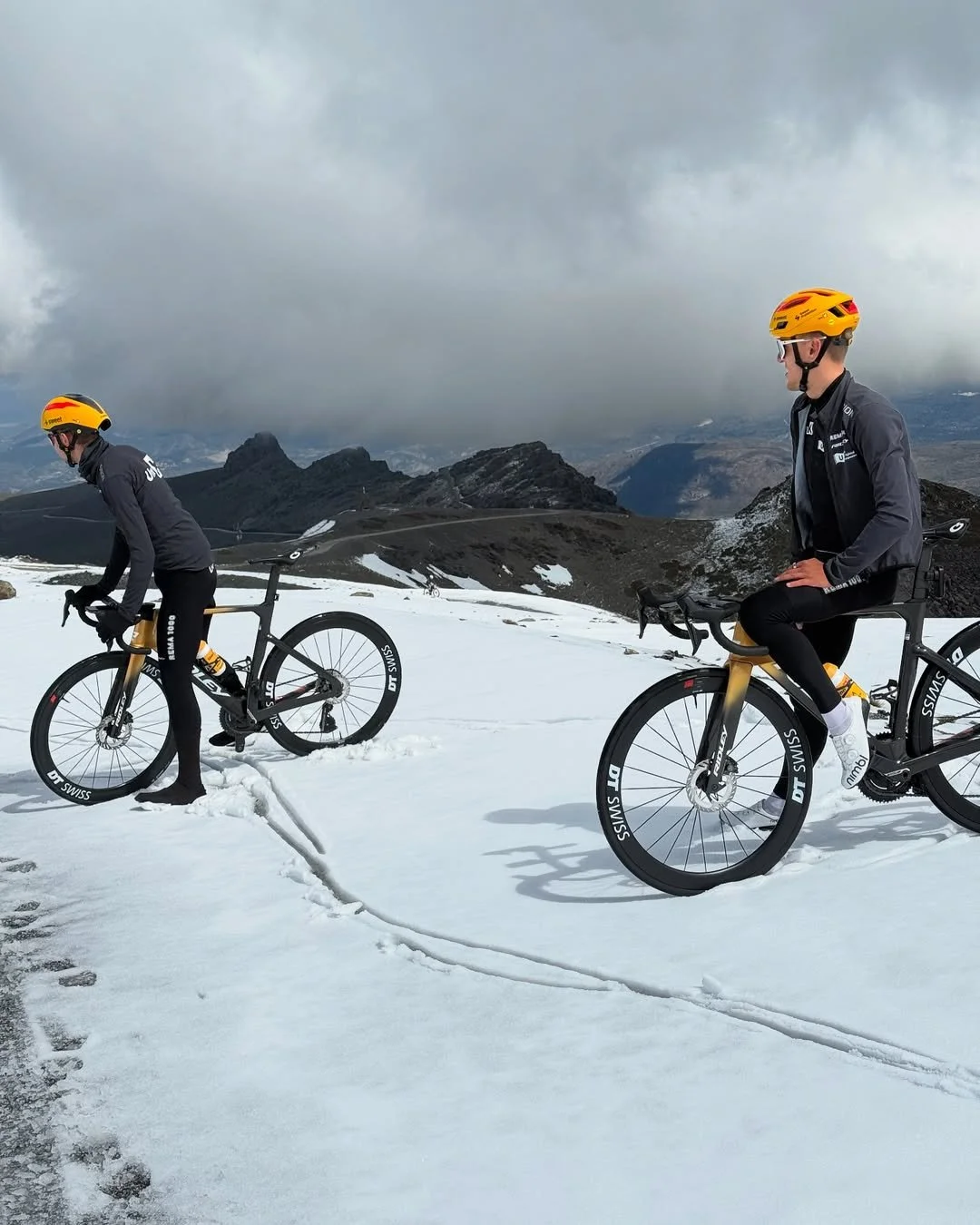Inside UNO-X Mobility Cycling’s High-Altitude Tour de France Preperations
Image credit: Ridley
Just weeks before the Grand Départ, UNO-X Mobility Cycling looks less like a cycling team and more like a travelling operations centre. At 2,300 metres in Sierra Nevada, laptops hum beside massage tables and lactate strips sit beside breakfast bowls. While riders recover from controlled stress loads, performance staff analyse oxygen uptake, a nutritionist monitors every bite, a dedicated chef prepares the meals, an osteopath works to reduce injury risk, a mechanic keeps the bikes dialled, and two carers make sure the day runs smoothly.
What looks chaotic is in fact tightly calibrated.
This isn’t just training — it’s a coordinated experiment in human performance, built by a collective. With Head Coach Olav Aleksander Bu contributing to a broader high-performance team, UNO-X Mobility Cycling is wiring scientific precision into every aspect of Tour de France preparation.
“What we do is applied science — performance is no longer about guessing, but it only works when it’s built together with people who own and understand the process.”
– Olav Aleksander Bu, Head Coach, UNO-X Mobility Cycling.
Altitude Training: Science Meets Structure
Altitude remains one of the most potent stimuli in endurance sport. The key isn’t just exposure — it’s precision. At UNO-X Mobility Cycling, adaptation is tracked using multiple tools and evaluated in the context of each rider’s total training and physiological state.
Three key tools are used to evaluate altitude adaptation:
Portable metabolic analyzers – to measure oxygen consumption and energy expenditure at various wattages.
Lactate testing – to manage intensity and monitor substrate utilization during sessions..
Carbon monoxide rebreather tests – to estimate changes in hemoglobin mass, which is one important marker of adaptation when evaluated alongside other physiological signals.
– “We only get to measure every 14 days now. So we need to make each test count,” Bu explains.
Image credit: Jonas Abrahamsen
The reason for this emphasis is to separate the many types of adaptation seen at altitude. An athlete might see a boost in power output, but what’s driving it? Improved ventilation? Oxidative stress and mitochondrial efficiency? Up- or downregulation of the glycolytic system? Increased hemoglobin mass? These distinctions matter when designing follow-up training loads.
Olav Aleksander Bu outlines a typical three-week altitude camp structure:
Week 1: Low mechanical load, adaptation-focused. “Planting the seed.”
Week 2: Increased volume and intensity. “Watering the seed.”
Week 3: High-intensity training. “Harvesting.”
– “You want the athlete to arrive at camp with just enough freshness to adapt. The body has to be ready to absorb the stress, not resist it,” he explains.
Bu cautions that both under- and overloading early in camp can limit the benefits of altitude:
– “It’s a knife edge. Too little load and the stimulus is wasted, too much and you blunt adaptation. It’s about combining altitude with the right type of stress, at the right time.”
Measuring Adaptation
UNO-X Mobility Cycling’s performance model takes a broader view than just power numbers. Alongside daily metrics like watts, heart rate, and nutritional intake, the team also tracks deeper physiological responses.
“Power data is great, but it doesn’t tell you the metabolic cost we need to fuel in and outside of training. Metabolic data tells you how much fuel it takes to go fast,” he explains.
Tools include resting metabolic rate checks, oxygen efficiency testing, and daily athlete debriefs.
“The athlete-coach conversation is still king. In the end, we weigh that feedback the highest,” Bu notes. “If what’s planned doesn’t match execution or how the athlete feels, we sit down and adjust — even in 2025, when we’re running self-repairing rovers on Mars.”
Image credit: Andreas Leknessund
Personalizing Performance
The coaching team works from the idea that training should be personal — even within a team setup. Each rider has a unique physiological profile, and metabolic testing helps tailor training to fit their specific role.
“A sprinter may still ride 4,500 kilometers at the Tour. So while the role differs, the load still needs to be managed carefully,” Bu explains.
“It’s not about eleven different plans — it’s about the same plan with different emphasis. One guy might do longer intervals, another needs more recovery. We tune the details, not the philosophy.”
Image credit: Jonas Abrahamsen
Altitude vs. Sea Level: Strategic Contrast
While altitude offers key blood-based gains, it doesn’t load the body in the same way sea level training does. For that reason, the coaching team alternates between the two across the season.
Sea-level blocks reintroduce musculoskeletal loading and help increase power output through mechanical strain. Non-cycling stress like light running or gym work adds additional layers.
“That’s why we mix in strength work or short running sessions — to balance central (oxygen transport) and peripheral (muscle, bone, connective tissue) systems.”
The team is aware that cyclists tend to have lower bone density than runners, not solely because of altitude, but also due to the non-weight-bearing nature of the sport, and in some cases, due to nutritional practices aimed at minimizing weight.
“That topic can get controversial fast,” Bu admits. “But it’s one more reason to monitor long-term health, not just short-term watts.”
Translating science into results
With Hautacam now behind them — and Tobias Halland Johannessen delivering a standout fourth place behind only Pogačar, Vingegaard, and Lipowitz — UNO-X Mobility has already proven its presence in the high mountains.
The next test is underway: a mountain time trial to Peyragudes, followed by the brutal climbs of Mont Ventoux, Col de la Loze, and La Plagne.
With hemoglobin gains banked in Sierra Nevada and training loads finely tuned over months, UNO-X Mobility Cycling enters the decisive phase of the Tour prepared. Whether chasing stages, or a top spot in the GC, every effort is intentional — and every decision is informed.
For more information, contact:
Henning Askjer Lefsaker, Head of Communications.




